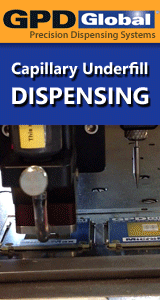Printed Circuit Board Assembly & PCB Design Forum
SMT electronics assembly manufacturing forum.
- SMTnet
- »
- Electronics Forum
- »
- 2 questions: via tenting and annular ring terminology.
2 questions: via tenting and annular ring terminology.
![]()
![]() Q #1) Is it more reliable to have the mask tent over the v...
- Jul 06, 1999
by
Q #1) Is it more reliable to have the mask tent over the v...
- Jul 06, 1999
by
![]()
![]() | Q #1) Is it more reliable to have the mask tent over the...
- Jul 07, 1999
by
Scott Cook
| Q #1) Is it more reliable to have the mask tent over the...
- Jul 07, 1999
by
Scott Cook
![]()
![]()
![]() | | Q #1) Is it more reliable to have the mask tent over t...
- Jul 07, 1999
by
| | Q #1) Is it more reliable to have the mask tent over t...
- Jul 07, 1999
by
![]()
![]() | | Q #1) Is it more reliable to have the mask tent over t...
- Jul 07, 1999
by
| | Q #1) Is it more reliable to have the mask tent over t...
- Jul 07, 1999
by
![]()
![]() snip
|
| If you go for plugging be sure you have a prot...
- Jul 07, 1999
by
davef
snip
|
| If you go for plugging be sure you have a prot...
- Jul 07, 1999
by
davef
![]()
![]()
![]() Thanks everyone. I appreciate the help.
John
| Q #1) I...
- Jul 09, 1999
by
Thanks everyone. I appreciate the help.
John
| Q #1) I...
- Jul 09, 1999
by
- SMTnet
- »
- Electronics Forum
- »
- 2 questions: via tenting and annular ring terminology.



.gif)



